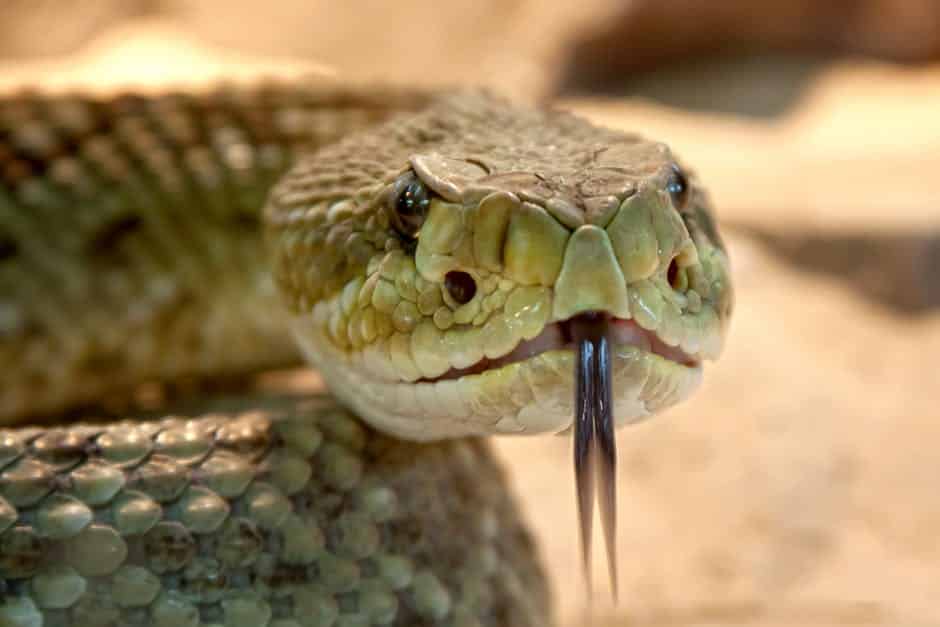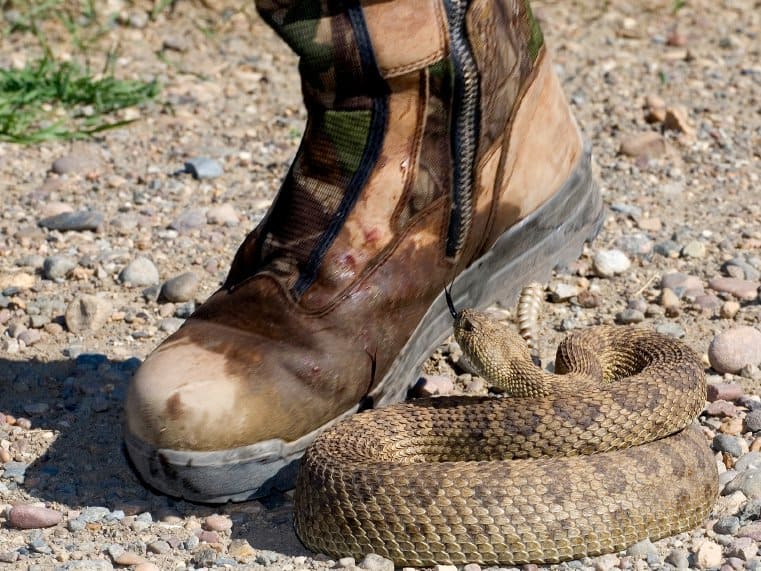If you really think it’s possible to learn how to avoid snakes while hiking you’re going to be disappointed. Snakes are just one of those things that every hiker has to deal with on the trail. There’s no getting around it if you go off into the woods enough you’ll eventually run into a snake. It’s important to understand a little bit about snakes so that you’ll be able to safely avoid them. Learning how to minimize human-wildlife conflict is your first step to staying safe. If you can’t avoid snakes you might also want to consider carrying a good snake bite kit just in case.
How To Avoid Snakes While Hiking
1. How to Identify Snakes While Hiking
Unless you’re a snake expert there’s no way to tell without a doubt whether or not a snake is poisonous. Your best bet is going to just try and avoid them as best you can. The good thing is that most snakes in the United States are not poisonous. Just like you should always check the weather you’ll want to know what kind of wildlife you’re likely to encounter in the woods. Your hike may go through a snake habitat and you’ll want to know whether you’re likely to encounter venomous or non-venomous snakes. Luckily there are only five types of venomous snakes in the United States and two of them are very easy to identify. The five poisonous snake species include the Rattlesnake, water moccasin, copperheads and coral snakes. Rattle snakes with their signature tail and Coral Snakes are both easy to identify but the water moccasin and copperhead can get a little tricky. You’re best bet is to treat all snakes as poisonous and ask a local forest guide or ranger what snakes you’ll likely encounter.

2. How to Avoid Snakes on The Trail
You’re best bet is going to be trying to avoid snakes on the trail. Sometimes that’s not possible(my mom found a Copperhead laying in her dryer), but try and avoid natural snake habitats. If you can’t avoid places snakes congregate try and be cautious and ready to move quickly. So where are you most likely to encounter a snake? Knowing a little bit about snake ecosystems helps take the guesswork out of avoiding snakes. Snakes are cold blooded which is why you are most likely to find a snake laying in the trail during the early morning and evening hours. He’s trying to get enough energy to make it through the day and night. During the hottest parts of the day you are more likely to find snakes hidden under shelter. You’ll most likely find them hiding under cool rotten logs, firewood and nestled in stones, crevices, leaves and fields. It doesn’t matter what type of snake it is they’re always more scared of you than you are from him. Coming from a guy who’s nearly ran over his mother running like a little girl that might be hard to believe. Most snakes are going to run away, but if they start to curl up and hiss or rattle you’ll obviously want to leave them alone. Just be mindful where you place your feet and hands because not all snakes will make warning sounds. It’s always a smart idea to wear a pair of long thick jeans and a pair of hiking boots in the woods just in case
3. What to Do if You See a Snake on The Trail?
Even when you’ve done everything you can to avoid a snake you will eventually see one lying across the trail. It’s just a part of being out in the woods, the good comes with the bad. Dealing with a snake in your trail really is all about having common sense. You’re going to want to give the animal as much space as you can. If you can try and figure out if the snake is venomous or nonvenomous. It really doesn’t matter if the snake is poisonous or not since you should treat all snakes the same way. Just leave the snake alone. Most snake bites occur when people try to move or kill the snake. The closer you get the more risk you’re taking upon yourself.
4. What if You are Bitten
It doesn’t matter how careful you are snake bites sometimes happen. Fortunately most of the snakes in the United States are nonvenomous and fairly docile. However if you do happen to get bit by a snake it’s important to know how to respond. As difficult as it will be the most important thing is to not panic. Try to remain calm and identify the species if possible. If you determine that the snake is nonvenomous you really don’t have a lot to worry about. Treat it like any other cut and make sure it doesn’t get infected. However if you do get bitten by a venomous species you need to know how to respond.
What Not To Do
- Don’t Suck Out The Venom: Never try to suck out the venom, because it won’t work. Your body pumps blood so quickly that you’ll most likely just introduce bacteria into the wound. You’ll be introducing the venom into a different part of your body.
- Don’t Cut Yourself to Increase Blood Flow: Many old time medical books recommend that you should cut yourself at the bite site to increase blood flow. The theory is that you would reduce the toxins by getting rid of the bad blood. This is simply old medicine that modern advancements have proven wrong.
- Don’t Create a Tourniquet: Creating a tourniquet is an idea that actually has some truth behind it. Restricting blood flow should slow down the poison from spreading through the body. I’m not a doctor so don’t quote me on this. Unless you’re out in the middle of nowhere without any way of getting to a hospital you’ll likely do more harm than good. A tourniquet can cause permanent nerve damage to the limb.
What Should You Do
- Stay Calm: The most important thing you should do is remain calm. While a venomous snake bit is dangerous your chance of serious injury is extremely low. When you panic your blood pressure will increase spreading the poison throughout your body. Try and identify the species if you can and return to your car immediately. You’re best bet is to treat all snake bites as if they are poisonous. Either call for an ambulance or drive to the hospital if you can. Knowing the species of snake may help medical responders. It might also help to call the hospital before you arrive since not all hospitals will have antivenom.
- Consider a Snake Bite Kit: If you are out in the middle of the woods you should seriously consider a Snake Bite Kit. The medical consensus is mixed on their effectiveness, but at the very least you’ll be able to clean the wound. Even if it isn’t a complete cure buying yourself a little time could mean the difference in a survival situation.

